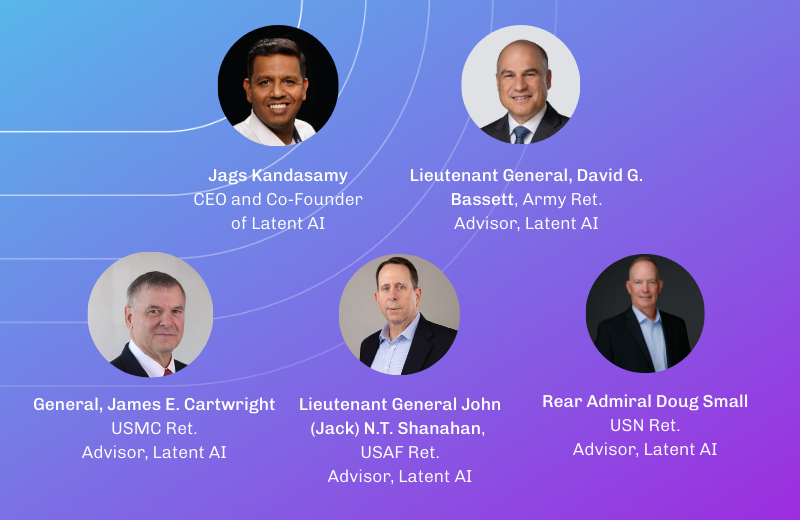From AI Strategy to Action: How We’re Answering the Call
Translating AI strategy into secure, deployable solutions
The White House recently released “America’s AI Action Plan,” a comprehensive strategy for maintaining U.S. dominance in artificial intelligence. As a company that has spent years deploying AI in the most demanding military environments, from tactical edge operations to secure defense facilities, we see this plan as validation of the path we’ve been pioneering and a clear directive for where American AI leadership must focus.
The Plan’s Vision Aligns with Battlefield Reality
The Administration’s three-pillar approach—accelerating innovation, building infrastructure, and leading international diplomacy—recognizes that AI leadership requires more than advanced models in laboratory settings. It demands battle-tested capabilities that operate effectively under fire, in contested environments, and meet the security standards required by national defense.
The plan’s emphasis on defense applications resonates directly with our operational experience. Programs like DIU/Navy Project AMMO and Army Project Linchpin have demonstrated how edge AI transforms battlefield intelligence capabilities, reducing model update cycles from months to days and enabling real-time decision-making in resource-constrained environments.
Making DOD AI Real: Lessons from tech transition initiatives
The plan calls for streamlined AI adoption processes across federal agencies, and programs like the Army’s xTech program make this vision a reality. Our journey through xTechPrime 2023 resulted in an SBIR Direct to Phase II contract, a win in the xTechScalable AI2 competition, and our recent selection as a finalist in the xTech AI Grand Challenge demonstrates that the Administration’s commitment to cutting red tape is working.
Latent AI’s success in defense innovation programs like DIU (Defense Innovation Unit), APFIT (Accelerate the Procurement and Fielding of Innovative Technologies), and the Army’s xTech competitions demonstrates how these virtual proving grounds turn the Administration’s AI strategy into reality. By fostering agile AI solutions, these programs deliver measurable advantages to warfighters, enabling rapid, reliable autonomy in mission-critical environments.
Software-Defined Warfare: America’s Competitive Edge
The plan’s vision for AI infrastructure highlights robust data centers and energy solutions to power national security innovation. Latent AI takes this further, delivering cutting-edge AI that ensures mission-critical capabilities thrive across diverse, even disconnected, operational environments, giving America an unparalleled advantage.
Our approach to software-defined warfare is closely aligned with that of The Atlantic Council. It moves beyond the traditional focus on large DoD platforms to emphasize rapid software integration and deployment efficiency. This shift enables the kind of responsive, adaptive AI systems that modern conflict demands. When the plan notes that AI must work in “high-stakes national security domains,” it captures the urgency we’ve witnessed in defense programs where delayed decisions can cost lives.
Security by Design: Not an Afterthought
The plan’s emphasis on “secure-by-design” technologies reflects a critical lesson from our defense deployments: security cannot be bolted on after development. Our platform demonstrates how edge AI can meet the highest military security standards, including DoD Impact Level 5 certification, while maintaining operational flexibility.
This security-first approach becomes critical when considering that “frontier AI systems are poorly understood” and this “lack of predictability can make it challenging to use advanced AI in defense, national security, or other applications where lives are at stake.” Our experience with AI model watermarking and encryption to secure AI supply chains provides the trusted AI capabilities the plan envisions.
Strategic Advantages: Efficiency and Global Leadership
While the plan appropriately focuses on expanding energy infrastructure to support AI growth, with Goldman Sachs projecting a 165% increase in data center power demand by 2030, America’s competitive edge lies in developing efficient, exportable AI solutions.
Our research shows that edge AI can reduce energy consumption by 65-80% compared to cloud-based alternatives while maintaining accuracy. This efficiency translates directly into a strategic advantage: AI systems that deliver critical capabilities without requiring massive infrastructure investments become more deployable, resilient, and exportable to allies.
From Strategy to Deployment: Our Ongoing Contribution
As this plan moves from strategy to implementation, Latent AI is already delivering on its core objectives through proven government integration via xTech, DIU, and AFIT programs; our secure US-based development and existing security clearances; real-world testing across Army, Navy, and Air Force applications; and scalable export solutions demonstrated through international partnerships.
The plan’s success will be measured by the ability to deploy AI capabilities effectively where they’re needed most, from contested battlefields to allied partnerships. As leaders in tactical edge AI, we’re positioned to help the Administration achieve its vision of American AI dominance through continued innovation in secure, efficient, and deployable AI systems.
The race for AI leadership is indeed America’s to win. Victory will come through the practical deployment of advanced capabilities in the environments that matter most, and that’s precisely where we’ve been focused from day one.





